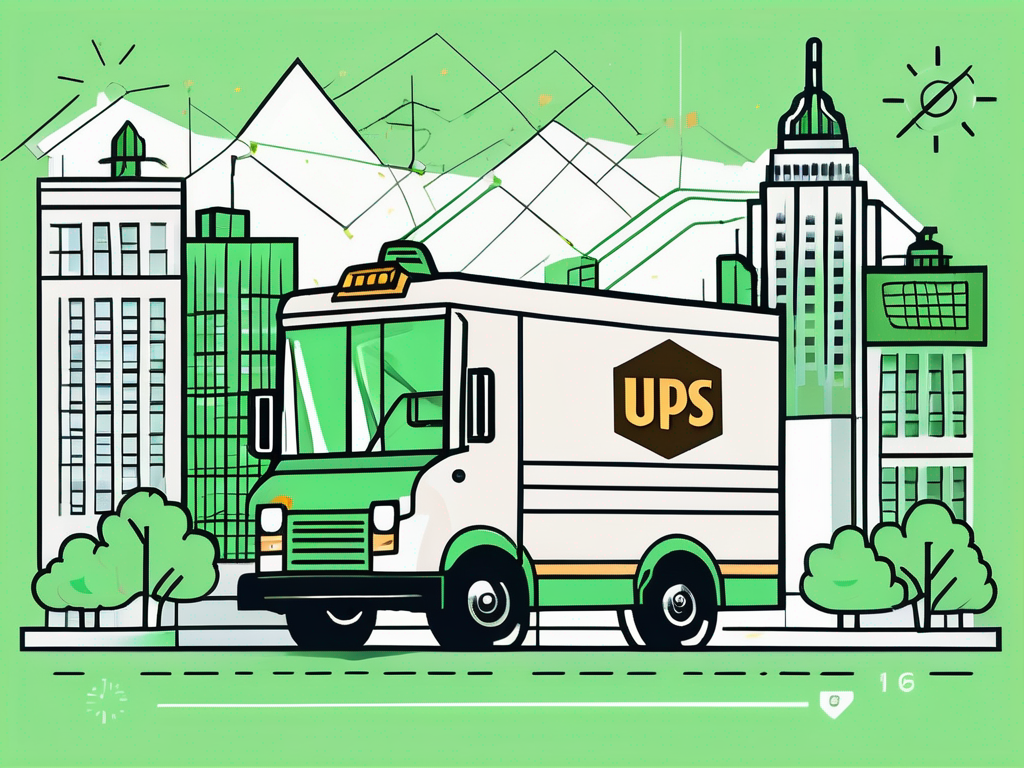Share this
Expedite Shipping Meaning In Logistics Explained
by Shipfusion Team on Dec. 24, 2024

When a business chooses to expedite shipping, it pays more for transportation with a quicker delivery time frame. Where typical delivery options are usually enough for the average customer, there are circumstances where urgency is worth the premium. In this article, we will explore the definition of expedited shipping, its use in today's market, the process involved, the associated costs, and its environmental impact.
Expedite Shipping Meaning Explained
Expedite shipping is a specialized service designed to accelerate the delivery of goods. Unlike regular shipping methods, which may take several days to weeks, expedite shipping can deliver items within 24 to 72 hours. This service is often utilized by businesses that need to ensure that their products reach customers swiftly.
What It Means to Expedite Shipping
The fundamental concept of expedite shipping revolves around speed and efficiency. This type of shipping prioritizes packages, often allowing them to bypass standard handling procedures. Various carriers offer expedited services, ensuring that packages are transported by the fastest available routes. Additionally, this mode often includes options for tracking, providing both businesses and consumers with peace of mind as they await their shipments. The logistics behind expedite shipping involve logistics planning and coordination, as carriers must optimize their routes and schedules to accommodate the urgent nature of these deliveries.
Key Terms In Expedite Shipping
To fully understand expedite shipping, it is vital to familiarize oneself with some key terminology:
- Lead Time: The time taken from when an order is placed until it is shipped.
- Transit Time: The duration the shipment spends in transit between origin and destination.
- Delivery Window: A predetermined time frame during which the delivery is expected to occur.
- Priority Shipping: A service that puts packages ahead of regular shipments.
By grasping these terms, both shippers and recipients can better navigate and understand the expedited shipping process. Understanding these concepts is crucial, especially for businesses that rely on timely deliveries to maintain customer satisfaction and loyalty. For instance, a company that sells perishable goods may choose expedited shipping to ensure that their products arrive fresh and in optimal condition, thereby minimizing waste and maximizing customer experience.
Moreover, the landscape of expedite shipping is continuously evolving, influenced by advancements in technology and changing consumer expectations. With the rise of e-commerce, the demand for faster delivery options has surged, prompting logistics companies to innovate their services. Features such as real-time tracking updates, automated notifications, and even drone deliveries are becoming more commonplace, enhancing the overall efficiency and reliability of expedite shipping. As businesses adapt to these trends, they can leverage expedited shipping not just as a means of delivery, but as a competitive advantage in a fast-paced market.
Why Might You Expedite Shipping?
In a rapidly changing world where consumer expectations are constantly evolving, expedite shipping has emerged as a vital element within the logistics sector. Businesses that leverage expedite shipping can maintain competitiveness while meeting the needs of their clients.
Meet Consumer Demand
Today's consumers are accustomed to fast service, influenced by online giants like Amazon. The expectation for quick delivery has prompted businesses, both large and small, to adopt expedite shipping solutions. Companies that offer expedited shipping options can respond to urgent orders effectively, leading to higher customer satisfaction levels. For instance, a customer ordering a last-minute gift is more likely to choose a retailer with quick shipping options, enhancing the retailer's appeal and profitability. Furthermore, the rise of mobile shopping has intensified this demand, as consumers expect to make purchases on-the-go and receive their items almost instantaneously. This shift in shopping behavior has made it imperative for businesses to integrate expedite shipping into their operational strategies to capture and retain a tech-savvy consumer base.
Additional Business Benefits
Expedited shipping poses a range of benefits for businesses beyond customer satisfaction. One significant advantage is the reduction of stockouts, allowing companies to replenish inventory swiftly. This ensures that products are available when customers desire them, leading to potentially increased sales. Moreover, expedited shipping can enhance a brand's reputation. Businesses known for quick deliveries often enjoy positive word-of-mouth promotion and customer loyalty. Additionally, expedite shipping can serve as a competitive differentiator in crowded markets. Companies that can promise and deliver faster shipping times may attract customers who are willing to pay a premium for speed, thereby increasing profit margins. This can be particularly advantageous for niche markets where customers are less price-sensitive and more focused on the urgency of their needs.
The Process of Expedite Shipping
Understanding how expedite shipping works can demystify the process for both businesses and consumers. The mechanics behind it involve a well-coordinated effort among various stakeholders to ensure speed and efficiency.
How Expedite Shipping Works
The expedite shipping process begins with the order placement. Once an order is confirmed, it moves to fulfillment, where items are picked, packed, and labeled for expedited transport. Following this, logistics partners are engaged to ensure rapid delivery. Each stage is monitored and optimized to minimize any delays. Depending on the shipping carrier, multiple transportation methods—such as air and ground—may be employed to facilitate delivery within the promised timeframe. Furthermore, the choice of shipping method can significantly influence the overall cost and speed of delivery, with air freight typically being the fastest but also the most expensive option. Businesses often weigh these factors carefully to strike a balance between cost efficiency and customer satisfaction.
The Challenges That Come with Choosing to Expedite Shipping
Logistics plays a pivotal role in expedited shipping. Efficient logistics management requires meticulous planning and coordination among warehouses, transportation services, and carriers. Inventory systems must be adeptly aligned to ensure that products are ready for immediate dispatch. Challenges such as route planning, shipment tracking, and managing unexpected delays are crucial components that logistics professionals handle. Employing advanced technology, such as real-time tracking software, can greatly enhance the ability to monitor shipments throughout the journey. Additionally, logistics teams often collaborate with data analysts to forecast demand and optimize inventory levels, ensuring that popular items are readily available for quick shipping. This proactive approach not only reduces lead times but also enhances the overall customer experience, as consumers increasingly expect their orders to arrive faster than ever before.
The Cost Factor In Expedite Shipping
While expedite shipping offers substantial benefits, it also comes with a price. Understanding this cost factor is essential for businesses and consumers to make informed decisions.
Understanding Pricing
The cost of expedited shipping is typically higher than standard shipping rates. Several variables influence these charges, including the distance between the shipping origin and destination, the weight of the package, and the selected delivery speed. For example, shipping a heavy item across a country overnight will cost significantly more than shipping a light package within the same city. It is essential to evaluate the urgency of the delivery against the costs when deciding on shipping methods, especially for businesses managing tight budgets. Moreover, additional fees may apply for special handling, insurance, or customs clearance, particularly for international shipments. These factors can quickly add up, making it crucial for shippers to get detailed quotes and understand the full scope of potential expenses before committing to an expedited shipping option.
Balancing Cost and Speed
Finding the right balance between cost and speed is imperative for businesses. Sometimes, it may be more beneficial to choose a less expensive shipping option if time is not of the essence. Businesses must analyze their shipping patterns and customer expectations to optimize their shipping strategies. For instance, seasonal sales may require faster shipping to meet increased demand, while regular inventory shipments may be planned with slower, cost-effective methods. Additionally, companies can leverage technology and data analytics to predict peak shipping times and adjust their logistics accordingly. By understanding customer behavior and preferences, businesses can better align their shipping choices with their operational goals, potentially saving money while still delivering satisfactory service. This strategic approach not only enhances customer satisfaction but also strengthens the company's reputation in a competitive marketplace.
The Environmental Impact of Expedite Shipping
As expedite shipping becomes increasingly popular, its environmental footprint cannot be overlooked. The transportation of goods, particularly through air freight, can contribute significantly to carbon emissions. Recognizing these concerns is vital for sustainable business practices.
Carbon Footprint Considerations
Air transport is the fastest shipping method, yet it also results in considerable greenhouse gas emissions. Businesses must evaluate the environmental implications of their shipping choices. For instance, a company may choose to offset its carbon footprint through various strategies, such as investing in renewable energy or engaging in carbon offset programs. This approach allows businesses to show social responsibility and appeal to environmentally conscious consumers. Additionally, the carbon footprint of expedited shipping can vary significantly depending on the distance traveled and the weight of the cargo, making it essential for companies to analyze their shipping routes and methods carefully to minimize their impact.
Sustainable Practices in Expedite Shipping
To mitigate the negative implications of expedite shipping on the environment, various sustainable practices can be implemented. For instance, companies can optimize their logistics processes to use fewer resources or choose eco-friendly packaging materials. Furthermore, teaming up with carriers that focus on sustainability can also be beneficial. This may include utilizing electric delivery vehicles or adopting more efficient routing systems to reduce overall emissions. Adopting these practices not only helps the environment but can also resonate well with a customer base that values sustainability. Moreover, businesses can consider consolidating shipments to reduce the frequency of deliveries, which can lead to lower emissions per unit shipped. By fostering partnerships with local suppliers, companies can also shorten shipping distances, further contributing to a reduction in their carbon footprint.
As consumers become more aware of the environmental implications of their purchasing decisions, they are increasingly seeking out companies that prioritize sustainability. This shift in consumer behavior has prompted many businesses to reevaluate their shipping practices and invest in greener alternatives. By incorporating transparency into their operations, companies can communicate their sustainability efforts to customers, fostering trust and loyalty. Moreover, the integration of technology, such as real-time tracking and data analytics, can enhance efficiency in shipping processes, allowing businesses to make informed decisions that align with both their operational goals and environmental commitments.
Want to Expedite Shipping? Shipfusion Makes It Easy
Expedite shipping offers undeniable benefits in meeting the demands of today’s fast-paced ecommerce landscape, but its successful implementation requires more than just speed—it demands precision, planning, and innovation. That’s where Shipfusion comes in.
Shipfusion’s comprehensive logistics solutions are designed to support businesses that rely on expedited shipping, offering proprietary technology, real-time tracking, and seamless integration with your ecommerce operations. Over 1,000,000 square feet of warehouse space across North America ensures your inventory is always positioned for rapid dispatch. Learn more by contacting our team today.
Share this
You May Also Like
These Related Articles

How to Negotiate Carrier Contracts In 2025

Become a Master of UPS Delivery Scheduling

Least Expensive Shipping for Heavy Items: How to Save on Costs
- April 2025 (18)
- March 2025 (26)
- February 2025 (26)
- January 2025 (37)
- December 2024 (16)
- November 2024 (23)
- October 2024 (22)
- September 2024 (27)
- August 2024 (9)
- July 2024 (8)
- June 2024 (5)
- May 2024 (8)
- April 2024 (8)
- March 2024 (6)
- February 2024 (6)
- January 2024 (5)
- December 2023 (3)
- November 2023 (3)
- October 2023 (5)
- September 2023 (4)
- August 2023 (2)
- July 2023 (1)
- June 2023 (4)
- March 2023 (2)
- October 2022 (1)
- September 2022 (5)
- August 2022 (4)
- July 2022 (7)
- June 2022 (4)
- May 2022 (4)
- April 2022 (6)
- March 2022 (2)
- February 2022 (1)
- January 2022 (3)
- December 2021 (2)
- November 2021 (4)
- October 2021 (2)
- September 2021 (5)
- August 2021 (4)
- July 2021 (4)
- June 2021 (3)
- May 2021 (2)
- April 2021 (3)
- March 2021 (3)
- February 2021 (3)
- January 2021 (2)
- December 2020 (4)
- November 2020 (2)
- October 2020 (4)
- September 2020 (2)
- July 2020 (5)
- June 2020 (4)
- May 2020 (2)
- April 2020 (2)
- March 2020 (4)
- February 2020 (1)
- December 2019 (1)
- May 2018 (1)
- March 2018 (2)
- February 2018 (3)
- January 2018 (3)
- November 2017 (3)
- July 2017 (4)
- March 2017 (3)
- February 2017 (5)
- January 2017 (3)
- December 2016 (4)
- November 2016 (6)
- October 2016 (6)
- October 2015 (1)
- September 2015 (1)
- June 2015 (3)
- May 2015 (3)
- August 2014 (1)
- July 2014 (1)
- March 2014 (1)
- February 2014 (1)